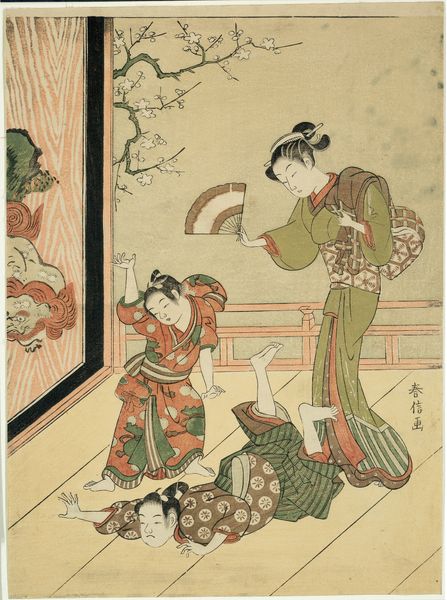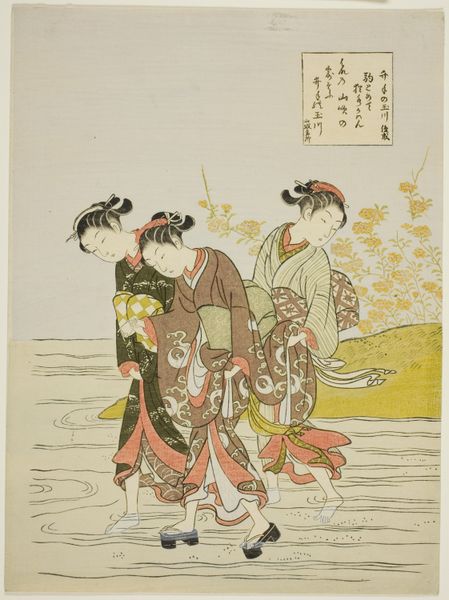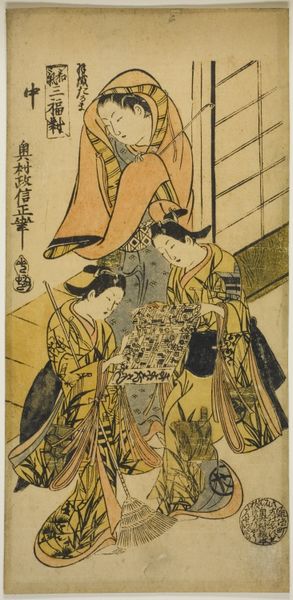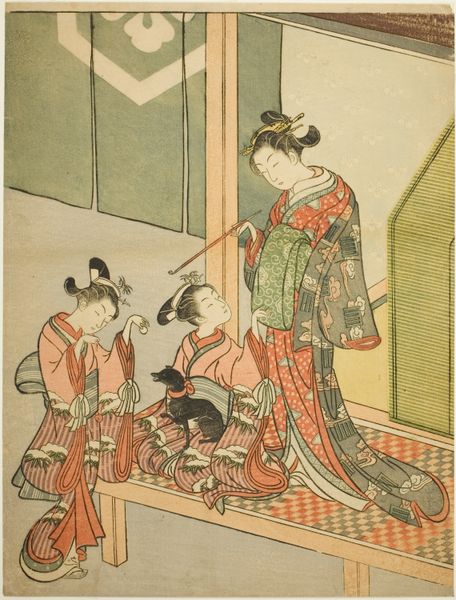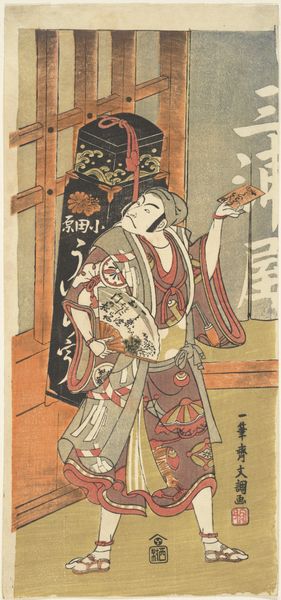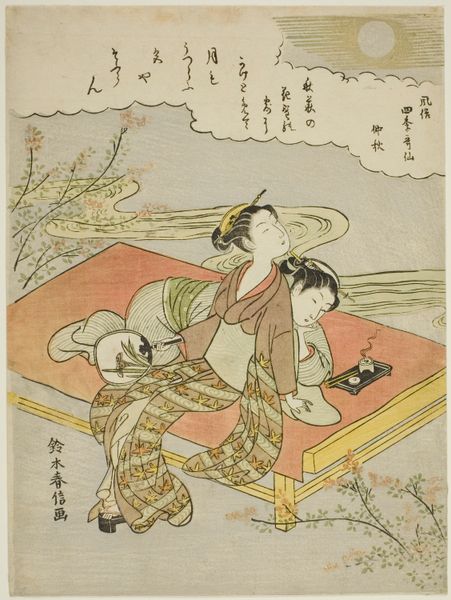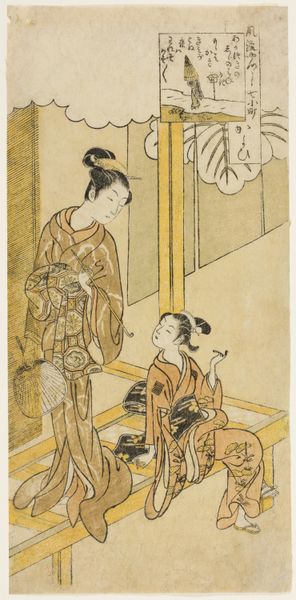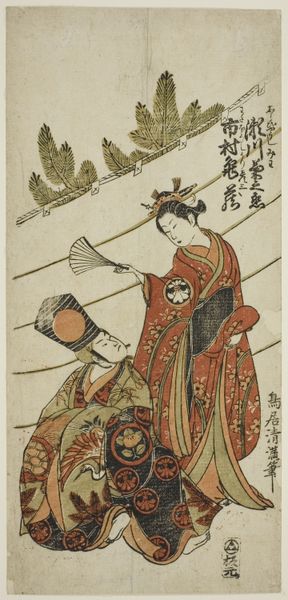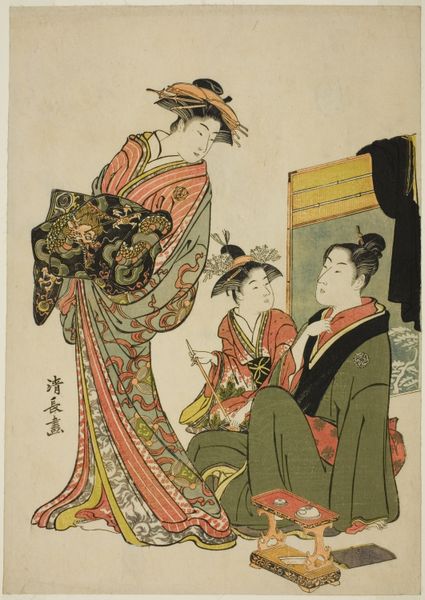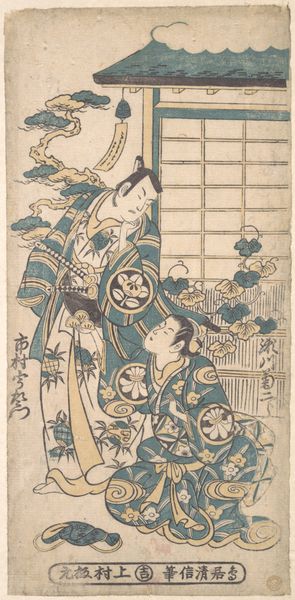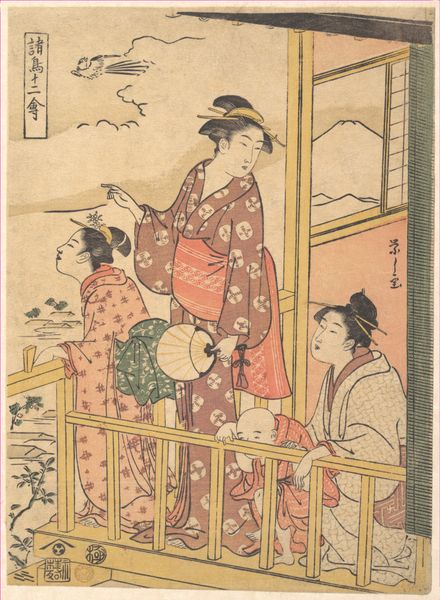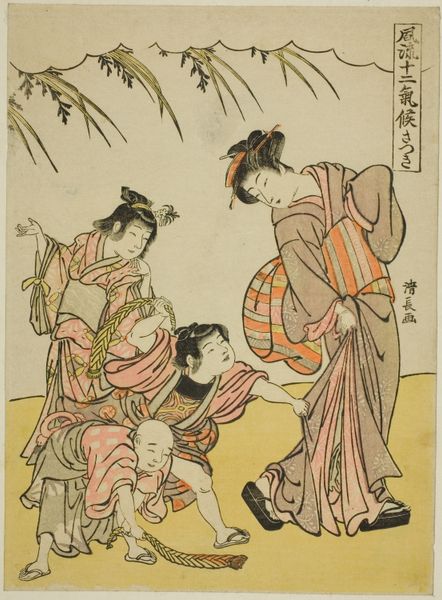
Parrot Komachi (Omu Komachi), from the series The Seven Fashionable Aspects of Komachi (Furyu yatsushi nana Komachi) Possibly 1615 - 1868
0:00
0:00
print, woodblock-print
#
portrait
# print
#
asian-art
#
ukiyo-e
#
japan
#
figuration
#
woodblock-print
Dimensions: 31.8 × 15.0 cm (12 1/2 × 5 7/8 in.)
Copyright: Public Domain
Editor: This is "Parrot Komachi," a woodblock print by Suzuki Harunobu, dating anywhere from around 1615 to 1868. It depicts a woman in a kimono with a child, standing next to a screen showing a large parrot. What strikes me is the gentleness and intimacy of the scene. How do you interpret the figures and their relationship in the context of Edo period Japan? Curator: This print beautifully exemplifies the Ukiyo-e tradition, but let's look closer at its potential for social commentary. The "Komachi" in the title refers to Ono no Komachi, a famous poet known for her beauty and talent. Placing her within these “fashionable aspects” suggests a commentary on celebrity, gender roles, and the commodification of female identity. How does Harunobu, through the figure of Komachi, negotiate these complex social currents, and what do you think the parrot signifies in that context? Editor: The parrot is unusual – a sort of exotic element within an otherwise traditional scene. Is it suggesting a commentary on foreign influence, maybe? Or does it stand as a symbol for something more personal? Curator: Precisely! The parrot, often imported and kept as a luxurious pet, could symbolize the influence of foreign cultures on Japanese society or, more subtly, serve as a metaphor for imitation and the performance of identity within courtly life. Consider the act of mimicry – the parrot mimicking human speech and these figures mimicking an ideal of beauty and status. Who dictates these ideals, and who has access to them? What is Harunobu inviting us to question about the structures of power embedded in representations of beauty and status? Editor: That’s fascinating. I hadn't considered the parrot's mimicry as a commentary on societal roles. I’m beginning to see how deeply political even seemingly simple Ukiyo-e prints can be. Curator: Absolutely. Art often subtly critiques, challenges, or reinforces the societal norms within which it was created. The artist embeds complex commentary in an accessible medium, forcing the audience to contemplate beauty, culture and social structure together.
Comments
No comments
Be the first to comment and join the conversation on the ultimate creative platform.
